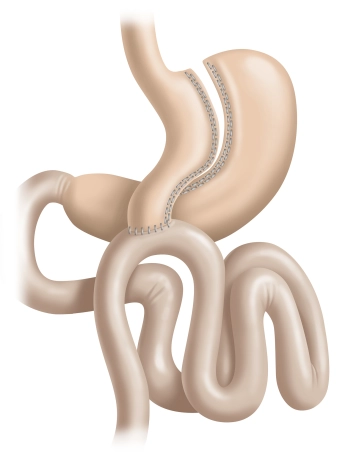The incidence and prevalence of morbid obesity with its associated comorbidities are increasing worldwide, especially in Western countries. According to information from the WHO, 600 million people are obese (BMI >30 kg/m22).
As substantiated underpinned by high-quality data, bariatric and metabolic surgical procedures are the most effective and sustained lasting treatment methods for morbid obesity and are superior to conservative multimodal therapies' treatment protocols.
In addition to long-lasting weight loss, concomitant diseases associated with obesity can also be successfully treated. These mainly include sleep apnea and other breathing disorders, type II diabetes mellitus, obesity-related cardiomyopathy and hypertension, dyslipidemia, pseudotumor cerebri, orthopedic knee injuries, spinal problems, stress incontinence, polycystic ovarian syndrome, and infertility. There is scientific evidence that massive weight loss leads to results in prevention, relative improvement, or even remission of somatic disease associated with obesity.
The dissemination and acceptance of bariatric surgery has greatly increased worldwide over the past 20 years (approximately about 150,000 procedures in 2003; 470,000 in 2013).
The most important pathophysiological mechanisms include restriction, malabsorption, and a combination of the two.
Hormonal effects play a key role in all procedures that diverting food from the gastroduodenal tract and/or resecting stomach gastric volume. Since 80 % of ghrelin receptors (hunger hormone) are located in the stomach, fewer hunger sensations are signalled centrally as a result of diversion/resection.
As a result of a variety of complex changes in the enterohumoral axis with metabolic effects, the sequelae of surgical procedures extend well beyond weight loss.
The expanded indication spectrum is designated by the new term “metabolic surgery.” The new term "metabolic surgery" was coined to denote the extended spectrum of indications. It is expected that bariatric surgery will take on increasing significance in the management of metabolic syndrome. Bariatric surgery is expected to gain increasing importance in metabolic syndrome management.
Many patients with type II diabetes mellitus have experienced complete remission of the disease only a few days after surgery, long before significant weight loss sets in. Using “metabolic surgery” in diabetics who are of normal weight or slightly overweight has been discussed in the meantime. There is now discussion of managing normal weight and slightly overweight diabetic patients by "metabolic surgery".
Due to the introduction of laparoscopic surgical techniques, the procedures, which were initially believed to be considered high-risk surgeries, may now be carried out with an acceptable risk of complications.
In Germany, the standard reimbursement scheme of the statutory health insurance funds does not cover bariatric-metabolic procedures. This is why each patient must submit a personalized application for reimbursement before such surgery.

